Какое освещение лучше всего подходит для складов и логистики?

Lighting in warehouses and logistics facilities plays an important role in ensuring work efficiency and employee safety. In places where various goods are stored and transported, proper lighting directly impacts the quality of operations, minimizing the risk of errors, delays, and accidents.
The working environment in warehouses is characterized by large spaces, high racks, and often limited access to natural light, which poses numerous challenges for lighting designers. Additionally, in logistics facilities, working hours are usually not limited to daytime – many operations take place at night, requiring a reliable, energy-efficient, and properly designed lighting system.
Warehouse and Logistics Facility Lighting
Proper industrial lighting in a warehouse translates into smooth work organization and team efficiency. Well-lit operational zones – such as corridors between racks, loading zones, or packing areas – enable faster and more precise task execution. Industrial lighting also allows for smoother movement of machines, such as forklifts, reducing the risk of collisions or product damage.
In logistics, where time and precision are critical, appropriate lighting supports order picking, loading, and transportation operations. In spaces where goods are stored and moved on a large scale, insufficient lighting can lead to losses resulting from errors in product identification or improper storage.
The Impact of Lighting on Operational Efficiency and Workplace Safety
Warehouse lighting not only affects work comfort but also safety. In areas with high traffic, where both people and machines work closely together, poor visibility can lead to serious accidents. Inadequate light levels can cause trips, collisions with racks, or mishandling of mechanical equipment.
A well-designed lighting system minimizes these risks by providing even and sufficient illumination in all key areas. Furthermore, the use of energy-efficient technologies, such as LED lighting, not only enhances safety and productivity but also significantly reduces operational costs, which is crucial in an industry under high financial pressure.
As a result, proper industrial warehouse lighting becomes not only a tool supporting daily operations but also a strategic investment in cost optimization and the safety of the entire logistics facility.
The Specifics of Warehouse and Logistics Center Lighting
Warehouse and logistics center lighting must be adapted to the specific requirements of spaces where both people and machines work. Every element of the infrastructure, from large open areas to narrow aisles between racks, requires a precisely designed lighting system. Additionally, environmental conditions such as varying temperatures, high humidity, or dust affect the durability and performance of the chosen solutions.
Large Spaces and High Ceilings – Design Challenges
Warehouses and logistics centers are characterized by large, open spaces and high ceilings, often reaching 12–15 meters. Such conditions require the use of lighting with a long range and appropriate intensity to evenly illuminate the entire area.
The best solution in such cases is High Bay LED fixtures, which provide high light output while maintaining energy efficiency. The key challenge, however, is minimizing glare, which can hinder work and affect visual comfort. High-mounted fixtures must be designed to ensure even light distribution, avoiding dark spots on floors or racks.
Narrow Aisles and Racks – The Need for Precise Lighting
In warehouses with narrow aisles and high racks, precise lighting is particularly important to enable easy identification of goods and efficient performance of warehouse operations, such as order picking or inventory management.
The use of asymmetrical lighting fixtures allows light to be directed exactly where it is needed – onto shelves and aisles – while minimizing light loss in other areas. It is also important that the light color be neutral (around 4000–5000 K), which facilitates distinguishing label and package colors.
Working Conditions: Temperature, Humidity, Dust
Warehouses and logistics centers can have very diverse environmental conditions. In cold storage and freezers, where temperatures drop below zero, it is necessary to use LED fixtures resistant to low temperatures. On the other hand, in warehouses storing goods requiring heating (e.g., materials sensitive to moisture), high temperatures can reduce the performance and lifespan of standard fixtures.
Resistance to moisture and dust is equally important, especially in areas where bulk products are stored or where working conditions are harsh, such as logistics areas located outside buildings. In such cases, fixtures must meet high sealing standards (IP65 or higher) to protect electronics from damage.
In summary, the specifics of warehouse and logistics center lighting require addressing a range of technical and environmental challenges. A well-designed lighting system should not only meet these requirements but also ensure energy efficiency and durability in long-term use.
Types of Lighting Used in Warehouses
Warehouse and logistics center lighting must meet diverse requirements to ensure work efficiency, safety, and energy savings. Depending on the facility's characteristics and operations, various types of lighting are used, differing in both construction and functionality.
LED Lighting – Advantages and Dominant Role
LED technology has dominated modern lighting systems in warehouses and logistics facilities, replacing traditional light sources such as fluorescent, metal halide, or sodium lamps. The main advantages of LED include:
• Energy efficiency – LED fixtures consume up to 60–80% less energy compared to older technologies.
• Long lifespan – the durability of LED fixtures often exceeds 50,000 hours, reducing replacement frequency and maintenance costs.
• No flickering effect – improves work comfort and prevents eye fatigue.
• Resistance to shocks and vibrations – particularly important in dynamic logistical environments.
• Instant light activation – crucial in the event of power outages or the need for quick lighting system activation.
In warehouses, LEDs are used in almost every space – from main storage halls and loading zones to office spaces.
Linear and point fixtures – differences and applications
In warehouses and logistic centers, two main types of fixtures are most commonly used:
Linear fixtures feature an elongated shape and provide even light distribution over large areas. They are ideal for illuminating wide spaces, such as aisles between shelves or packing zones. They are often used in series arrangements, ensuring consistent lighting across the entire length of the room.
• Point fixtures (High Bay)
Point fixtures, also known as High Bay LEDs, are designed for installation at high ceilings, often exceeding 10 meters. They are perfect for lighting open spaces where focusing light on a specific area is key. Thanks to their high light intensity, they ensure excellent visibility even in the farthest corners of the warehouse.
Each of these types of fixtures can be equipped with additional features, such as remote control, motion sensors, or dimming capabilities, allowing the lighting to be adjusted to current needs.
Emergency lighting – crucial in logistical facilities
Emergency lighting is an essential component of every warehouse and logistic center, especially in large facilities with intense traffic. Its primary role is to ensure safety during power outages or in crisis situations, such as evacuations.
Emergency lighting systems include:
• Evacuation fixtures – marking escape routes, indicating emergency exits, and guiding to the nearest safety zones.
• High-intensity light points – providing the minimum required light levels in key areas, such as loading zones, staircases, or corridors.
• Emergency power supply (UPS) – ensures uninterrupted operation of lighting during power outages.
Modern emergency lighting systems are designed based on LED technology, ensuring reliability and energy efficiency. Additionally, they are increasingly integrated with Building Management Systems (BMS), allowing remote monitoring of technical conditions and immediate response to potential malfunctions.
Proper lighting selection in warehouses, including both main light sources and emergency lighting, not only optimizes costs but, most importantly, ensures safety and work efficiency.
Standards and requirements for warehouse lighting
Warehouse and logistic center lighting must meet specific standards and legal requirements to ensure workplace safety and user comfort. Properly selected lighting not only improves operational efficiency but also minimizes the risk of accidents. Below are the key standards and requirements related to warehouse lighting.
Standard PN-EN 12464-1: minimum light intensity in warehouses
The PN-EN 12464-1 standard regulates the lighting requirements for indoor workplaces, including warehouse spaces. It specifies the minimum light intensity that should be provided in different facility zones. For warehouses, the recommended light levels are:
• 200 lx (lux) – for main communication routes and general warehouse spaces.
• 300 lx – in manual work zones, such as packing, sorting, or goods receipt areas.
• 500 lx or more – in areas requiring precision, e.g., quality control stations.
Moreover, the standard considers parameters such as lighting uniformity, color temperature (e.g., neutral or cool light), and the color rendering index (CRI), which should be at least 80 for work zones.
OSH requirements related to workplace lighting
Occupational Safety and Health (OSH) regulations place particular emphasis on ensuring proper lighting in workplaces, directly impacting workers' health and safety. The most important requirements include:
• No flickering effect – flickering light can cause eye strain, reduce concentration, and even increase the risk of workplace accidents. LED technology, combined with appropriate power supplies, eliminates this issue.
• Appropriate contrast and glare-free lighting – excessive light contrasts or reflections can hinder visibility. Fixtures should be equipped with anti-glare covers or special shields.
• Shadow minimization – especially in narrow aisles and high shelving areas, where shadows can make locating goods difficult.
Regular OSH audits, including lighting inspections, help identify potential discrepancies and implement appropriate corrections, contributing to increased workplace safety and comfort.
Lighting in explosion hazard zones – when is it necessary?
In certain warehouses and logistic centers, especially those dealing with flammable substances, gases, dust, or chemicals, specialized lighting is required in explosion hazard zones. Such zones are defined by the ATEX directive (from French Atmosphères Explosibles), which outlines the rules for designing, manufacturing, and using equipment in such conditions.
Requirements for lighting in ATEX zones include:
• Fixture tightness – fixtures must meet high tightness standards (e.g., IP66, IP67) to prevent dust, gases, or liquids from entering the device.
• Materials resistant to corrosion and chemicals – crucial in environments with high chemical aggressiveness.
• Overheating protection – lamps must be designed so that their surface temperature does not exceed levels that could ignite an explosive atmosphere.
The use of fixtures compliant with ATEX requirements is necessary in, among others, chemical warehouses, oil industry facilities, as well as areas storing flour, sugar, or other materials generating explosive dust.
By adhering to the standards and legal requirements for warehouse lighting, it is possible to ensure optimal working conditions, reduce the risk of accidents, and increase the operational efficiency of logistics facilities. Regular inspections and cooperation with reputable lighting manufacturers, such as Sammode, KIRA Leuchten, or C.C.E.A., enable the implementation of solutions tailored to the individual needs of each facility.
Choosing the right lighting for different types of warehouses
Selecting the appropriate lighting system in warehouses is crucial to ensure optimal work efficiency, safety, and energy savings. Depending on the type of warehouse, working conditions, and the specific nature of the stored goods, it is necessary to use suitable lighting solutions that adapt to the characteristics of the given space. Below, we present detailed requirements for lighting in various types of warehouses.
High-bay warehouses – how to avoid shadows between racks?
High-bay warehouses, where goods are stored at significant heights, place particular demands on the lighting system. The main challenge in such spaces is avoiding shadows that can hinder the identification of goods and warehouse operations.
To ensure uniform lighting in such facilities, High Bay LED fixtures are the best solution. These are installed at great heights, enabling the uniform dispersion of light across the entire warehouse. It is essential for the fixtures to have adequate power and light focus to eliminate shading effects, especially between the racks. Additionally, asymmetrical light distributions can help direct light precisely onto the workspace rather than empty spaces above the racks.
Another solution could be the use of fixtures with dimming capabilities, which adjust light intensity as needed. This helps reduce energy consumption when full lighting power is not required.
Cold storage warehouses – lighting resistant to low temperatures
Cold storage and freezer warehouses are places where goods are stored at very low temperatures. Lighting in such conditions must be designed to operate reliably despite extreme conditions. Standard fixtures may have difficulty functioning in sub-zero temperatures, so specialized LED fixtures resistant to low temperatures are used in cold storage warehouses.
LED technology is particularly resistant to low temperatures, but it is also crucial to use fixtures made of materials that prevent condensation inside the device. Additionally, hermetically sealed fixtures with an IP65 or higher protection class are essential to safeguard the devices from moisture and frost.
It is also worth considering lighting with heating functionality in extremely low temperatures, which prevents moisture condensation on the fixture's surface and ensures durability over time.
Outdoor and semi-open warehouses – weather-resistant lamps
In outdoor and semi-open warehouses exposed to variable weather conditions, lighting must be particularly resistant to rain, wind, snow, as well as extreme temperatures. In such spaces, fixtures with a high protection class, such as IP66, IP67, or higher, should be used to effectively protect against moisture, dust, and dirt.
For outdoor warehouses, it is especially important to use fixtures resistant to UV radiation, preventing rapid aging and loss of lighting properties. Additionally, in open spaces, it is beneficial to opt for LED lamps with adjustable light intensity, allowing the lighting to adapt to outdoor conditions and improving safety at night when visibility is limited.
To ensure longevity and reliability of the lighting in such demanding conditions, it is advisable to choose fixtures with robust construction, resistant to shocks and vibrations, particularly in areas where outdoor warehouses involve heavy equipment transport and loading operations.
Examples of lighting manufacturers for warehouses and logistics
The choice of appropriate lighting manufacturers for warehouses and logistics centers is key to ensuring not only energy efficiency but also safety and comfort at work. Among the renowned companies offering modern lighting solutions for demanding industrial environments, three stand out: Sammode, KIRA Leuchten, and C.C.E.A.
Sammode – fixtures for demanding environments
Sammode specializes in providing lighting fixtures designed for challenging and demanding working conditions, such as ATEX zones, the chemical, food, or energy industries. The brand's products are distinguished by exceptional durability and resistance to extreme weather conditions, making them an ideal solution for facilities requiring specialized lighting.
Sammode fixtures are characterized by high sealing (IP66, IP67) and resistance to vibrations, impacts, and variable temperatures. These features ensure longevity and safety of use, even in the most demanding working environments.
KIRA Leuchten – precise lighting solutions
KIRA Leuchten offers innovative lighting solutions, particularly in the LED sector, tailored to industrial needs. They specialize in creating fixtures that combine high energy efficiency with precise light distribution, essential in spaces requiring accuracy and safety.
KIRA Leuchten products are highly resistant to harsh conditions, such as high vibrations, dust, moisture, or extreme temperatures. These qualities make KIRA fixtures popular in the automotive, chemical, and warehouse industries, where reliability and longevity are critical.
C.C.E.A. – technologies dedicated to various industrial sectors
C.C.E.A. offers a wide range of LED lighting solutions tailored to industries requiring advanced lighting technologies, such as the food, pharmaceutical, or chemical industries. C.C.E.A. products combine modern technologies with the highest safety standards, providing not only high-quality lighting but also care for the workspace.
C.C.E.A. fixtures are known for their resistance to extreme conditions and ease of cleaning, which is particularly important in industries where hygiene and safety are paramount. This combination makes C.C.E.A. products popular in warehouses and industrial plants where reliability and high-quality standards are priorities.
Summary
Warehouse lighting and logistics centers play a key role in ensuring operational efficiency, safety, and working comfort. Choosing the right lighting solutions, such as LED technologies, can significantly reduce operational costs, improve energy efficiency, and increase workplace safety. Thanks to modern fixtures, such as linear and spotlights, it is possible to optimally adapt lighting to various types of warehouse spaces, ensuring uniform illumination and eliminating shadows.
In the context of specific working conditions, such as cold storage warehouses, high-bay warehouses, or facilities in explosion-hazard zones, it is crucial to use suitable technological solutions that guarantee durability and safety, even in difficult conditions. Investing in LED lighting from reputable manufacturers such as KIRA Leuchten, Sammode, or C.C.E.A. ensures high quality, reliability, and innovation that meet the demands of the logistics and industrial sectors.
Choosing lighting in accordance with applicable standards, such as PN-EN 12464-1, and considering occupational health and safety requirements, is the foundation for ensuring optimal working conditions and safety. Regular audits and collaboration with professional manufacturers allow for the implementation of solutions tailored to specific needs, enhancing efficiency, comfort, and safety in warehouses and logistics centers.
Investing in appropriate lighting systems is a long-term benefit that improves operational efficiency, reduces costs, and raises safety and hygiene standards in industrial facilities.




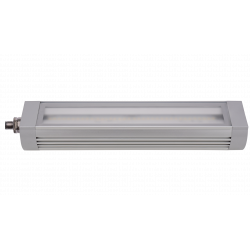
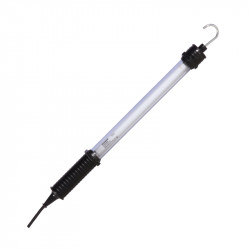
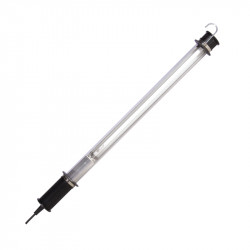
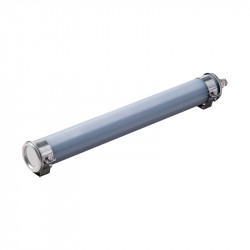
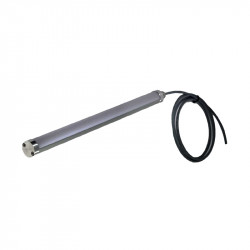
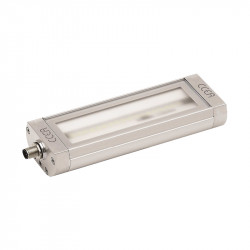
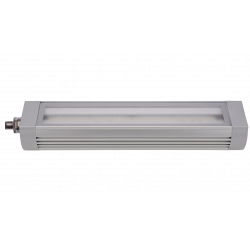
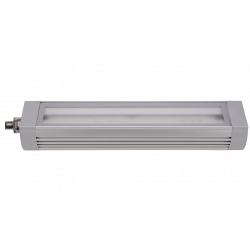
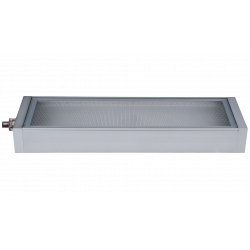
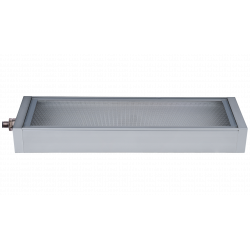
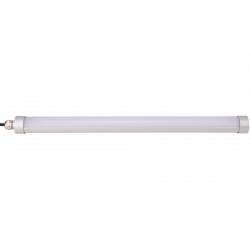
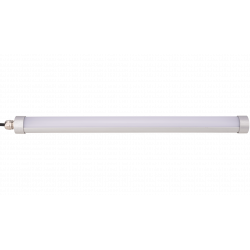
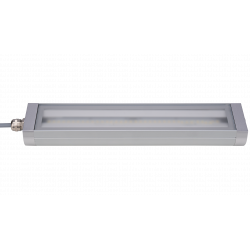
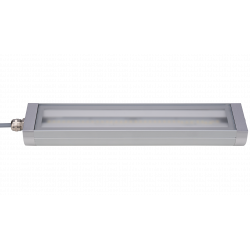
Оставить комментарий